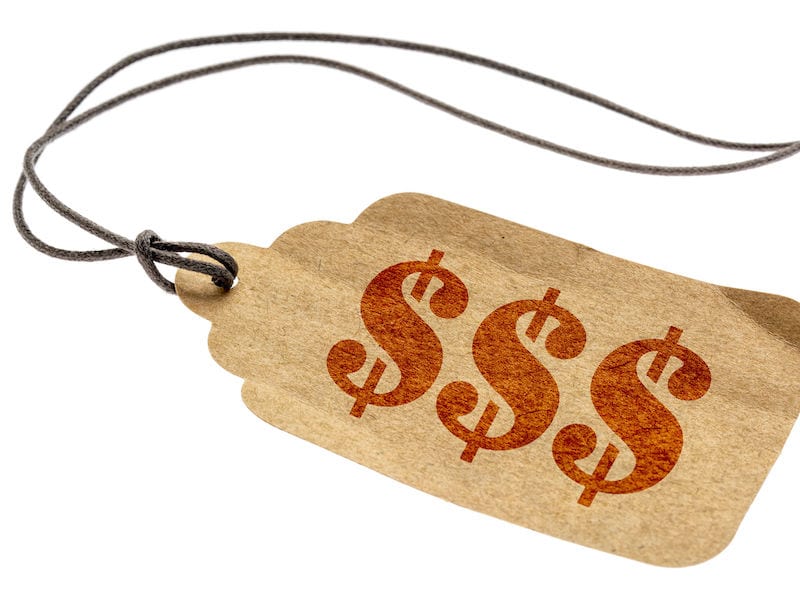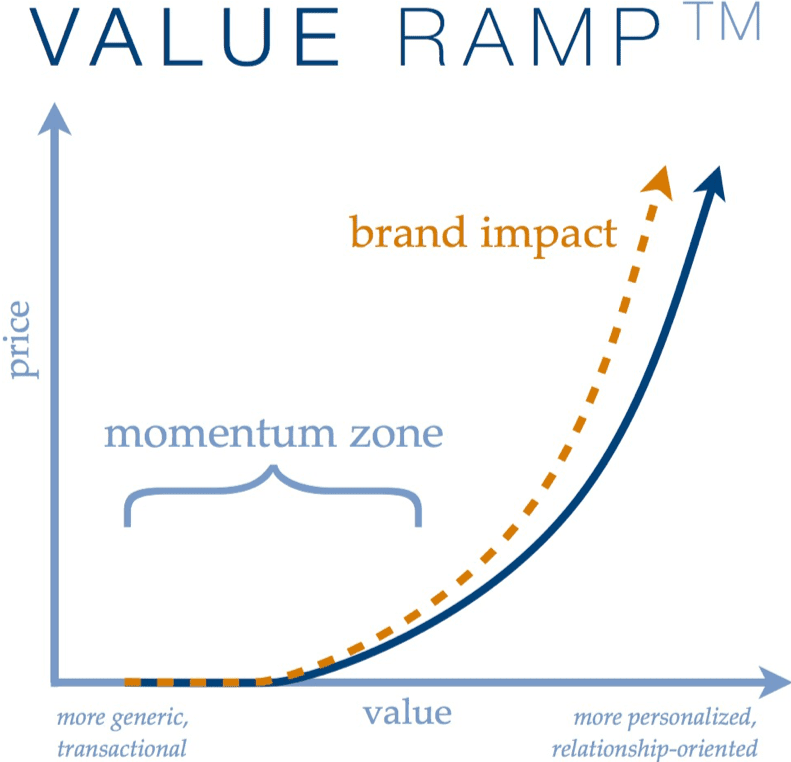

There are many factors to consider when planning a masterclass, but pricing is one of the most important. Price too high and you’ll place yourself out of the market. Too low and you risk devaluing your teaching, or even losing money. Understanding how to maximize revenue without alienating learners is a skill that all edupreneurs should learn.
Here’s how to find your pricing sweet spot for a successful masterclass on any subject.
Know Your Market
Effective pricing emerges at the intersection of three variables: your market, your audience, and the value you offer.
Your market is the general environment into which you will introduce your masterclass. It takes into account other options that are available to your prospective learners, including not only courses that might directly compete with your masterclass (substitutes), but also other paths they may take to achieving their goals (alternatives).
If there are easy-to-find substitutes, then you will have to take into account how they are priced. That doesn’t mean that you need to price at the same level or try to beat the competition on price – in most cases, either of those approaches is a bad idea – but you do need to understand the pricing points of reference your prospects are likely to have in mind, and you need to understand what value is being offered at those price points.
Your goal is to offer value that is clearly different – usually higher – and for which you will therefore charge differently – and usually more.
There’s a good chance you will find a wide range of classes and prices in your market, especially if you’re teaching in a popular field. While you may not be able to make a direct comparison between your masterclass and other options, you should be able to get an idea of what the market will sustain. Understanding the approximate price range of the competition will help you determine how much to charge for your masterclass, and also how to position it.
Similarly, if there are easy-to-find alternatives – especially if they are free – you are going to have to figure out how you will position yourself as the better choice for your prospective customers. Why should they pay for what you offer if there are viable free or low-cost alternatives? You have to be able to communicate that clearly and convincingly.
Keep in mind, too, the general economic conditions and business environment into which you will launch your masterclass. For example, whether the money for a purchase is coming directly from the individual student or from their employer will likely make a difference in how much you can charge (often, but not always, less when the student funds her own learning).
And, obviously, in an economic downturn – like the one we are experiencing at the time I am writing this article – it may be harder charge a premium price. Still, be careful not to undercut your pricing and damage your future prospects. In most cases, masterclasses are going to be premium offerings. Make sure your published pricing reflects that while potentially offering scholarships or limited time codes as a gesture of goodwill towards your prospective learners.
Know your audience
Your prospective learners are, of course, the second piece of this puzzle. They are your audience – the slice of the broader market that you have the ability to reach and who are most likely to see your offering as valuable. You need to understand these people as well as possible.
What are the learning outcomes that will be most valuable to them, that will help them tackle major problems or opportunities?
How valuable would it be for them to solve the problems or realize the opportunities you address? Really – try your best to put a dollar figure on what achieving the learning outcomes you promise would mean.
Is paying for training and education something they naturally do, or will that have to be convinced? What about online?
How strong is their ability to pay – based, for example, on the average income levels? If their wallets can’t sustain your pricing, it simply doesn’t matter how good your masterclass is.
Your goal should be to identify the point at which your learners consider your masterclass expensive – perhaps a bit of a stretch – but not unaffordable, and worth the potential upside. Attending should be a commitment, but it shouldn’t break the bank.
Depending on who your learners are, “expensive but affordable” could be $97, $497, $1997 or much more, and what that price point is will have a significant effect on how you run your course. As a rule of thumb, the more expensive your course, the more professional it should be and the more access learners will expect to you – e.g., through live sessions, discussion boards, e-mail.
That’s why it’s important to identify the price range of your masterclass early on, so you don’t commit to expenses (including your time) you’re unlikely to recoup or underwhelm learners who are paying four or five figures for your masterclass.
Know your value
Finally, you need to be very clear about the value your masterclass will offer and communicate that value in a compelling and convincing way.
Remember that a masterclass isn’t a typical on-demand online course, which you can distribute to an almost infinite number of learners for the same initial outlay. Masterclasses are – and should be perceived as – exclusive offerings and the learners you target should expect to pay a premium for direct access and more one-on-one attention from you.
You are valuable, your time is valuable, and you should be paid not only for the time spent teaching the masterclass, and the hours you put into writing and planning it as well, but also for the value of your unique experience and expertise and the outcomes they can help your learners achieve.
Keep in mind, too, that if you have other educational offerings – whether online or off – your prospective learners will likely compare your masterclass to those other offers, so your pricing should make sense in relationship to them. In terms of the Value Ramp that I have written about here before, a masterclass will typically fall above the middle of the curve.


So, for example, if you have mid-level or lower level offerings for which you charge, say, $497, your masterclass would logically be priced much higher because of the higher value it offers.
In general, when the time comes for you to promote and sell your masterclass, remember that you’re offering far more than a lesson. You’re providing expert, dedicated instruction to a select group, who will leave your class with a deeper knowledge and understanding of your subject and the ability to realize significant positive gains as a result.
That is your key value proposition, and that’s why people sign up for masterclasses, rather than on-demand online courses or other, cheaper options.
Bringing It All Together
When you started reading, you may have been hoping that I would tell you “The price for a masterclass should be X.” Hopefully you are realizing at this point that there is no way to do that because …
It’s your market.
It’s your audience.
It’s your value.
That said, everything above points to a clear approach to pricing.
First, you understand what typical prices are for education and training in your market and what types of outcomes are being promised at those prices.
Second, you get very clear about the ways your masterclass will offer different – and presumably more valuable – outcomes.
To the extent you can, try to actually put a dollar figure on those outcomes – think of factors like additional earning potential or cost savings you may create for your learners – but also build a strong psychological, emotional case for the value of the outcomes you promise – the “priceless” component of your value.
Finally, based on what you know about your audience, make some well educated guesses about how much additional value – beyond market norms – your audience may be willing to pay for. Keep in mind that you probably have different segments in your audience and only some – or even one – of those segments may be true candidates for your masterclass. Where can you add more value or possibly pare back value in order to justify the price point for your masterclass?
Testing and piloting
Now, it’s likely you will go through the process above and still not be crystal clear on how to price. And let’s face it, in the end you won’t know if you have it right until you put your offering into the market.
Still, there are good ways to bolster your confidence before going all in.
One, assuming you have reasonable access to your market through e-mail or other channels, is to conduct a survey. If you do this, be aware that asking people directly about price – i.e., How much will you pay? Will you pay X? – is not a great approach. We have many more biases than we are aware of when it comes to pricing and it is rare that our answers to pricing questions correspond to our actual behavior.
That said, there are some approaches to asking about price that are much better than others. In the video below, for example, I discuss using the Van Westendorp Price Sensitivity Meter to set the price for my company’s online virtual conference. I combined this approach – which is based on a standard set of questions – with additional questions about willingness to buy and the results we got worked very well for us.
Of course, even a relatively sophisticated technique like Van Westendorp still asks about price. So, the data you get back is still likely to be somewhat biased – most likely toward the low side. Actual behavior is much more reliable, which is why running a pilot is an option to consider seriously. In fact, I think running a pilot – which I write about more extensively here – is one of the best ways to make sure you end up with both the right course design and a price that works.
You should charge for a pilot just as you would for the finished class – i.e., no discount – but offer some additional value – for example, some special extra time with you, or maybe access to an on-demand course, if you have one – to help offset the fact that it is a pilot. Doing this will give you an idea of how much demand there really is for your masterclass and whether the price you have in mind is viable. You’ll also be in a position to get input from participants on what is or isn’t valuable about the offering and gather testimonials – both of which will be invaluable for positioning and promoting the final masterclass.
And don’t price based on length
This is a trap that I often find consultants who charge by the hour fall into: more time equals more money.
But think about it for a minute: why do you hire a consultant? And, why do you take a course?
Is it because you want solving your problem to take as long as possible?
That may be in the interest of a consultant who charges hourly, but it is never in the interest of the client or the learner.
The client – which, in your role as a teacher, is your learner – just wants her problem solved. She wants to know what she needs to know to stop the pain or achieve the gains that will substantially improve her circumstances.
Length has nothing to do with it.
So, again, don’t price based on length. Priced on the value you will make possible for the learner – and work very hard at identifying that value and communicating it in a clear, compelling, powerful way.
But what about costs?
You need to cover them.
😉
But any masterclass you create should offer value that, based on enrolling a relatively small number of learners, will far exceed whatever costs you may incur.
Whatever you do, do not price based on your calculation of costs plus a mark-up. You will leave the vast majority of your profit potential on the table.
Of course, it is true that running a masterclass may cost a bit more than a run-of-the-mill course.
Hosting a masterclass priced at the upper end of the market means adding extra niceties that learners attending low-cost masterclasses don’t mind doing without. Your streaming service, for example, should match the attendance cost, and is more likely to be a premium conferencing service than a free hangout space.
Premium pricing also means expert delivery. That may mean more prep time for you and it may mean investing in better equipment. You definitely want to use a high-quality microphone and camera and appropriate lighting to ensure you can be seen and heard well and that the audio or video quality of your class does not cause any distraction. This may even mean hiring professional video and audio help.
And wherever appropriate, you’ll want to make use of professional quality visual aids and illustrations – including downloadable job aids, worksheets, checklists, and other materials – to help your learners follow your masterclass and apply what you teach. If you intend to demonstrate anything that’s hard to see, consider using a second camera to project what you’re doing onto your screen. (Or, possibly consider a Mevo.) If learners are paying top dollar to attend, it’s important to ensure that nobody misses any part of your masterclass.
So, those are some potential cost increases associated with a masterclass, but again, you should be charging at a rate that is more than enough to cover those costs and generate a solid margin.
If, for whatever reason, you really do have costs that it will be difficult to cover, consider find one or more sponsors for the masterclass. (In general, though, sponsors should be a source of margin, not cost coverage.)
The masterclass revenue engine
Obviously, hosting a masterclass can be a great way of attracting new learners and boosting your revenue. But it can also generate significant ongoing income from the learners who attend.
If you have other paid offerings, such as online courses, a published book, or one-on-one coaching, be sure to tell learners about them and provide the information they need to sign up. If they liked your masterclass, they’re primed to be receptive to your other work.
And, of course, stay in touch.
Your masterclass learners have demonstrated their strong interest in your subject, and investment in your teaching, and are likely to be interested in learning from you in the future. In fact, they are probably some of your best future customers. Be sure to tag them as a segment in whatever platform you use to manage your e-mail. You will want to be able to reach out over time with offers intended especially for them.
Keep in mind that these are people who have been willing to pay a premium for access to you, so psychologically they will be more receptive than your average customer to higher-priced offerings going forward.
To put that a different way, the more people you attract to a premium priced masterclass, the more you increase your revenue potential over time by raising the overall bar on the prices you are able to charge. On your Value Ramp (see above), higher priced offerings have a “magnet” effect that can both increase your ability to raise prices on offerings lower down the curve and pull your prospective customers up the curve.
In general, pulling off a successful masterclass can be a real shot in the arm for your education business, and getting the price right is an important part of the equation. For other key parts, be sure to check out the rest of the series on creating and hosting a masterclass:
- How to Plan an Online Masterclass
- How to Get Sponsors for Your Masterclass
- How to Promote your Masterclass to Build Interest and Maximize Sales
- How to Lead a Masterclass: Effective Strategies for Teaching Adult Learners
See also:
Table of Contents


